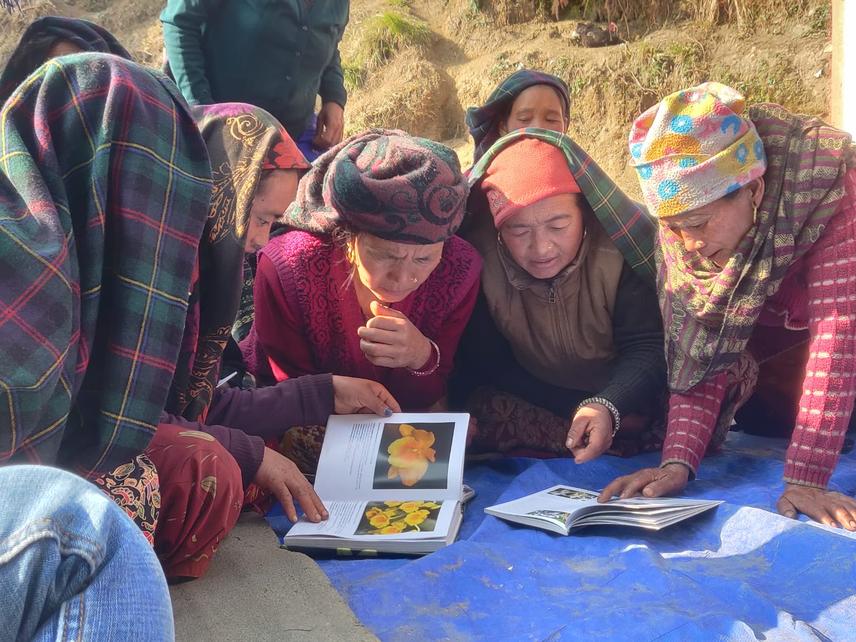Reshu Bashyal
Other projects
19 Apr 2023
Rethinking Our Actions around Species Identification in Conservation Intervention
Illegal trade is threatening the survival of orchid species globally, including in Nepal, which hosts over 500 species. Uncontrolled harvesting and trade are growing but largely neglected due to a lack of conservation awareness, local livelihoods’ reliance on the trade, and limited enforcement capacity for identification, especially when the species are dried and processed. This demands urgent conservation action and targeted training for local stakeholders.

Interacting with the community. © Kumar Paudel.
In the previous RSG project, we directly engaged over 100 key stakeholders in plant conservation (e.g. enforcement officials from Division Forest Offices and local communities) by building their capacity on the importance of conserving plants and developing proper identification skills. Through interviews and surveys, the project generated important qualitative pre- and post-assessment data reflecting the usefulness of the training intervention for enforcement officials and community members. This project builds on our previous work, with a specific focus on Dactylorhiza hatagirea and other medicinal orchids found in Gorkha, as they were found to be the most traded and in urgent need of conservation.
This project will train enforcement personnel and work with local stakeholders to raise conservation awareness and design conservation measures for medicinal orchids, in particular the endangered Dactylorhiza hatagirea, highlighting the need for its conservation plan.
By the end of the project, we will have trained at least 20 local-level enforcement officials to identify medicinal orchids. This will sensitise 60 key stakeholders (local-level medicinal plant harvesters, traders, enforcement officials) on the importance of conserving orchids (with a focus on Dactylorhiza hatagirea), their legal status, and the need for urgent research and conservation action. Additionally, it will engage these sensitised key stakeholders to co-design conservation measures targeting Dactylorhiza hatagirea. We will publish key findings and share results through awareness programmes with targeted stakeholders. The exit strategy is ensured by the strengthened capacity of local community stakeholders to safeguard orchids and increase partnerships during the project. This project is likely scalable to other taxa facing similar conservation challenges and to other regions within Nepal and globally.
Header image: Dactylorhiza hatagirea (panchaule). © Reshu Bashyal.